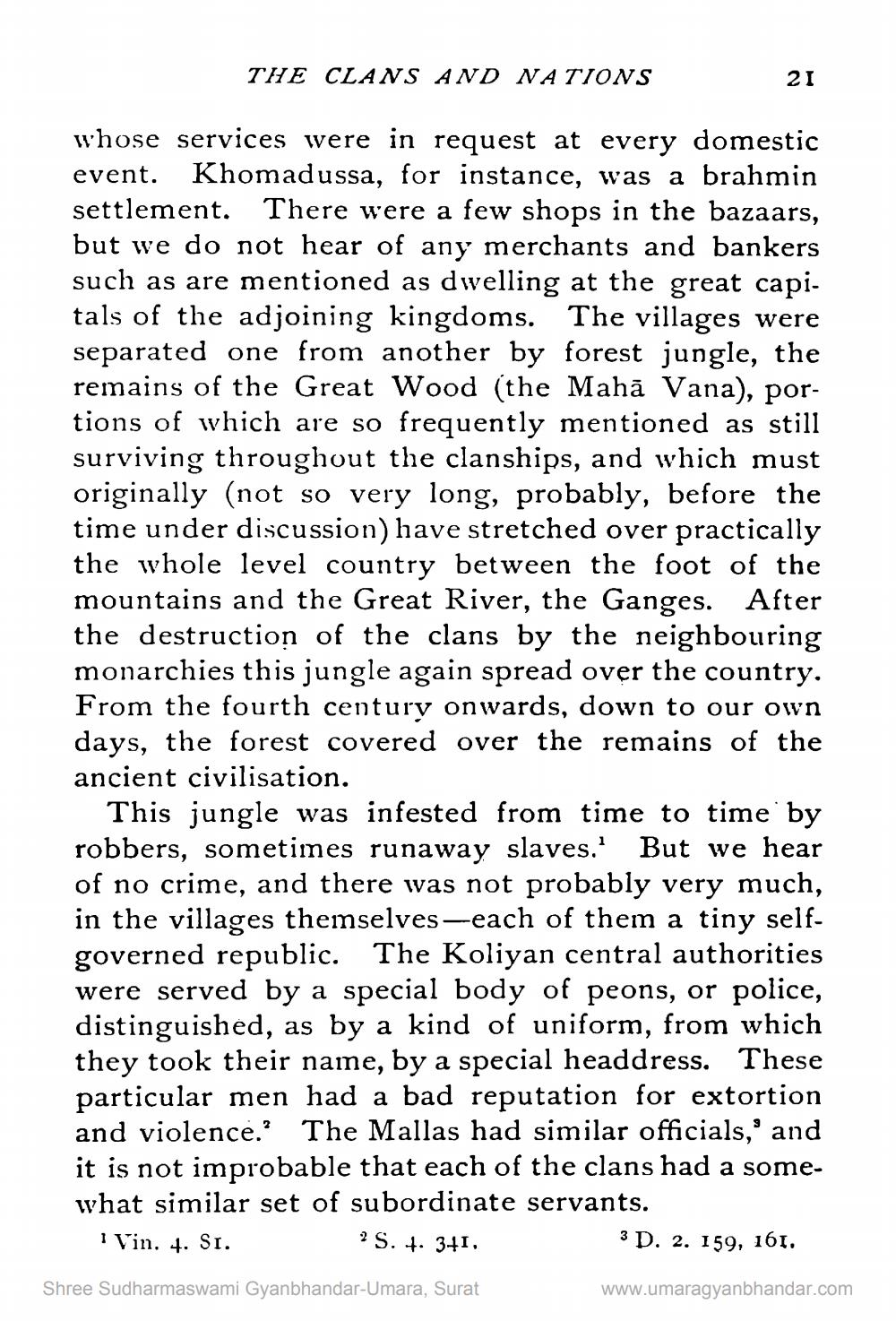________________
THE CLANS AND NATIONS
21
event.
whose services were in request at every domestic Khomadussa, for instance, was a brahmin settlement. There were a few shops in the bazaars, but we do not hear of any merchants and bankers such as are mentioned as dwelling at the great capitals of the adjoining kingdoms. The villages were separated one from another by forest jungle, the remains of the Great Wood (the Maha Vana), portions of which are so frequently mentioned as still surviving throughout the clanships, and which must originally (not so very long, probably, before the time under discussion) have stretched over practically the whole level country between the foot of the mountains and the Great River, the Ganges. After the destruction of the clans by the neighbouring monarchies this jungle again spread over the country. From the fourth century onwards, down to our own days, the forest covered over the remains of the ancient civilisation.
This jungle was infested from time to time by robbers, sometimes runaway slaves.' But we hear of no crime, and there was not probably very much, in the villages themselves—each of them a tiny selfgoverned republic. The Koliyan central authorities were served by a special body of peons, or police, distinguished, as by a kind of uniform, from which they took their name, by a special headdress. These particular men had a bad reputation for extortion and violence. The Mallas had similar officials,' and it is not improbable that each of the clans had a somewhat similar set of subordinate servants.
2 S. 4. 341.
1 Vin. 4. Sr. Shree Sudharmaswami Gyanbhandar-Umara, Surat
3 D. 2. 159, 161. www.umaragyanbhandar.com




